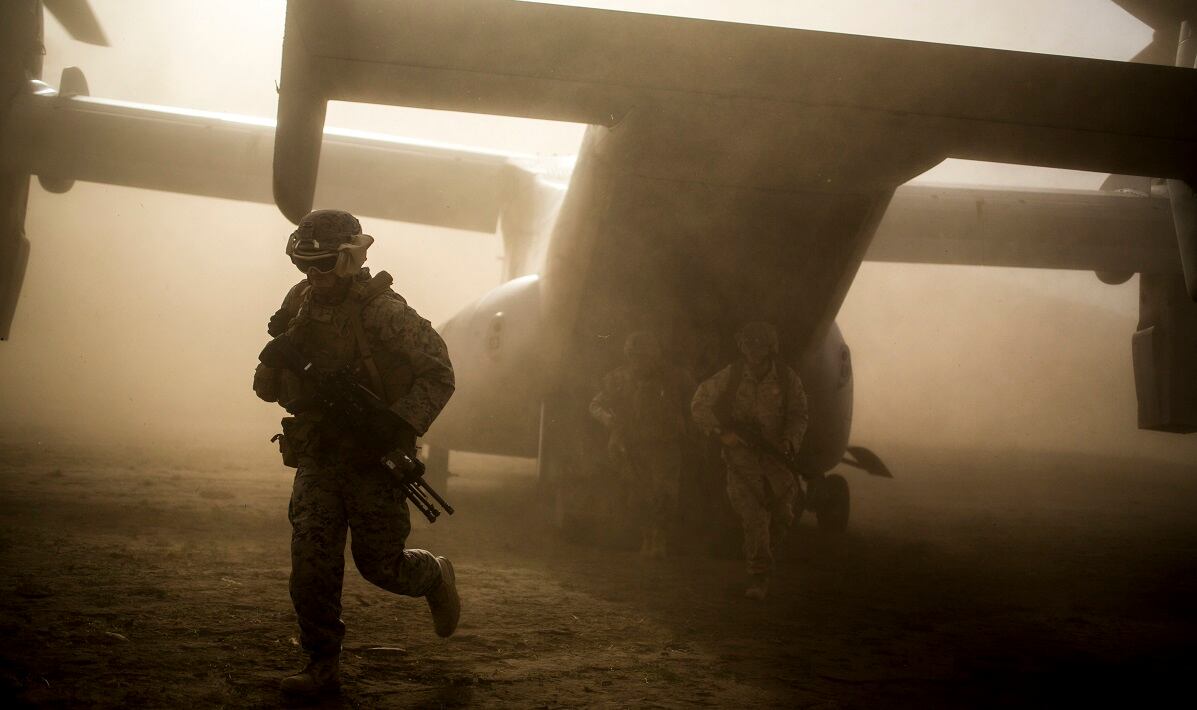MARINE CORPS BASE QUANTICO, Va., ― The director of a secretary-of-defense-directed task force is seeing potential for “generational” progress in both how the Marine Corps and Army is matching its manpower with readiness and deployment needs.
And those moves could mean the end of noncombat related “busy work” and could give a true picture for commanders from the squad level up of just how many trained troops they have ready to go and who’s leading them.
Joe L’Etoile is the director of the Close Combat Lethality Task Force. It is a group created earlier this year with the specific initial focus on giving Marine, Army and Special Operations troops at the squad level overmatch against any near-peer adversary or pacing threat.
RELATED

Much of the early and some ongoing attention looked at equipment, from a better rifle or night vision to reducing the weight of body armor, helmets and batteries.
But at the annual Modern Day Marine military expo in Quantico, Virginia, L’Etoile, a retired Marine infantry lieutenant colonel who previously served as senior adviser on readiness to Secretary of Defense James Mattis, pointed out behind-the-scenes changes that could have an even larger impact.
That could end the decadeslong practice of grabbing bodies from other units to fill out the roster in the soon-to-deploy unit. Because ultimately, he said, that’s a losing game for the total force.
“We have to get away from this Ponzi scheme of transferring people from one unit to another to make a unit whole,” he said. “Because if the balloon goes up, that unit you just cannibalized is now in the hurt locker.”
L’Etoile told a sadly familiar story that many ground combat unit commanders faced during the height of the wars in Iraq and Afghanistan that continues today: the ‘on paper’ readiness of a unit versus the actual readiness.
“I’ve got scar tissue from this one, big time,” L’Etoile said. “The first time I took my battalion to Iraq I had seven 0311 sergeants out of the 27 I rated for my squad leaders.”
The next time he deployed every one of his new infantry lieutenants was straight out of Infantry Officer Course and had arrived within 90 days of deployment. And 30 of those days were for leave, and another 30 the Marines didn’t have their equipment to train with.
“I was doing flashcards to learn my lieutenants on the flight over,” L’Etoile said.
But the retired infantry officer isn’t whining. That’s just the way it goes when you get the call and troops are needed.
However, there are ways to do it better.
When it comes to truly measuring ready manpower, he said commanders have two questions to answer.
Those are, “assigned strength” and “on-hand strength,” meaning, how many people are assigned to the billets and spots on a unit roster and how many you actually have in those spots, ready to go.
There are a host of reasons why those numbers don’t match, from non-deployable status to Marines or soldiers in schools training. But some of the more troubling are under the form of Borrowed Military Manpower in the Army and Fleet Assistance Program in the Marines.
That’s when base commanders make a call for labor, be it gate guard, tax center assistance or lifeguard duty or handing out towels at the gym.
Both the Marines and Army have begun serious efforts to reduce those jobs that are not increasing lethality, L’Etoile said. In addition, they’re reprioritizing nonlethal training.
He’s not downing suicide awareness or sexual harassment/assault awareness. Those are important, and safety is important.
But new initiatives would give commanders more discretion to put lethality training at the top of the list, giving needed time to the nonlethal needs as that lethality training reaches satisfactory levels.
The question lingers though, of how commanders have a clear picture of their actual strength, their “out-the-door-now” readiness?
L’Etoile said both the Marines and Army have embarked on what he calls potentially department-level, “generational” change in measuring exactly that.
The Marine Corps has recently began inputting detailed squad data into its readiness reporting system. As it gathers, low-, mid- and top-level, commanders can see in a glance where the 648 Marine Corps squads are, how many have sergeants serving as squad leaders who have completed the Infantry Small Unit Leaders Course and how many haven’t, what percentage of squad leaders are sergeants, corporals or lance corporals and more.
On the Army side, “Objective T” is even more demanding, L’Etoile said.
“At the end of the day it is what I consider the ‘Holy Grail’ of readiness,” he said.
The goal is to match the manpower system to readiness.
“So that you have your people when you need them for the training cycle,” he said.
Todd South has written about crime, courts, government and the military for multiple publications since 2004 and was named a 2014 Pulitzer finalist for a co-written project on witness intimidation. Todd is a Marine veteran of the Iraq War.





